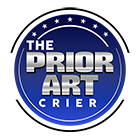What in the world is the patent agent apprenticeship and why talk about a revival?
On March 23, 2021, the PTO published a Request for Comments in the Federal Register directed to the Technical Qualifications prerequisite to become a Patent Agent. The PTO proposed and subsequently implemented minor administrative changes to the General Requirements Bulletin (GRB). By doing so, the PTO has expanded the list of acceptable degrees and amended the coursework requirements for non-degree holders ostensibly allowing more people access to the patent agent exam. There were 32 respondents to the Request. While most (29) approved of the proposals six (6) went further proposing the revival of the patent agent Apprenticeship Program. Prior to the written exam, which commenced in 1933, future patent agents would apprentice with someone already on the rooster thereby qualifying for entry onto the roster themselves. The Apprenticeship Program did not end completely until the mid-1990s, forty+ years after the introduction, in 1952, of both the technical requirement and the GRB.
Why would six commentators including Microsoft and the Intellectual Property Owners Association propose an apprenticeship?
Spurred by the Success Act in 2018, an assignment by Congress to the PTO to investigate causes of a patentee gender gap, the idea emerged in 2019, that the PTO could “Boost Patentee Diversity By Relaxing the Technical Barriers to Patent Bar Membership.” In the fall of 2020, Mary Hannon, a third year law student at DePaul, proposed “implementing an apprentice model as an alternative path to patent bar eligibility.” I assume that the March 23, 2021 Request for Comments was an outgrowth of these three earlier events. Historically the apprenticeship was about practical work experience in patent law. I presume that a new apprenticeship model would be along the same lines. So my question is: How does an apprenticeship in patent law align with the technical qualifications’ requirement? Where is the nexus? If the issue is a formidable technical requirement it would logically make sense that an apprenticeship would need to focus on demonstrating technical competence. We absolutely agree and argue that technical competence is openly demonstrated in the process of finding prior art.
Over a five year period (it takes two years to train a searcher) a private sector patent searcher will identify prior art across a broad range of diverse technologies, involving multiple dozens of unrelated classes/subclasses. This work demonstrates technical competence commensurate with patent prosecution (and examining) responsibilities. We think the Director should accept this hands-on experience in place of the technical requirement and allow the fully trained searcher to take the Agents Exam. It does not require the technical skills of a working engineer or bench scientist to find prior art so a less strict educational standard is appropriate. (Additionally, the searcher will learn a significant volume of patent law in the process of years long searching: filing dates; continuations/continuations-part/divisionals; assignees; PCTs; duty to disclose; antecedent basis; single sentence claims; first to file; RFCs; Office Actions; etc.… all of which together make a patent information specialist. We think that patent information specialist could serve as a as basis for a second rooster but that would be the subject for a future post.)
While we think an apprenticeship as described in this post is an idea worth investigating, we do not think it is probable. Creating an apprenticeship based on actually demonstrating technical competence with patents would require a complete rethinking of searchings’ place in the broader patent field. There are two functions that a make a substantive contribution to the patent process; one of them is not officially recognized in the United States. The patent quality issue was unable to bring the search functions’ contribution to the forefront, maybe diversity will be the force to drive the profession forward and improve patent quality in the process.
